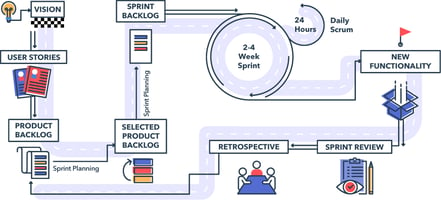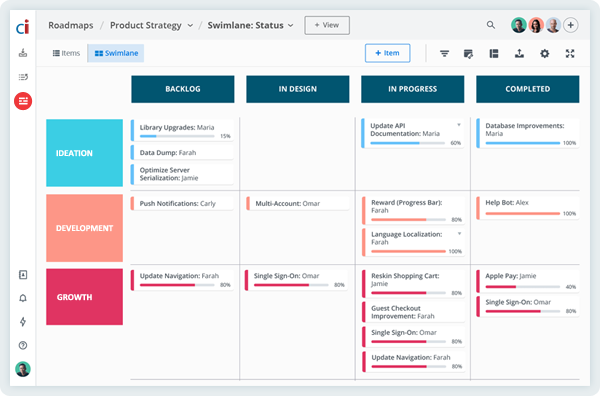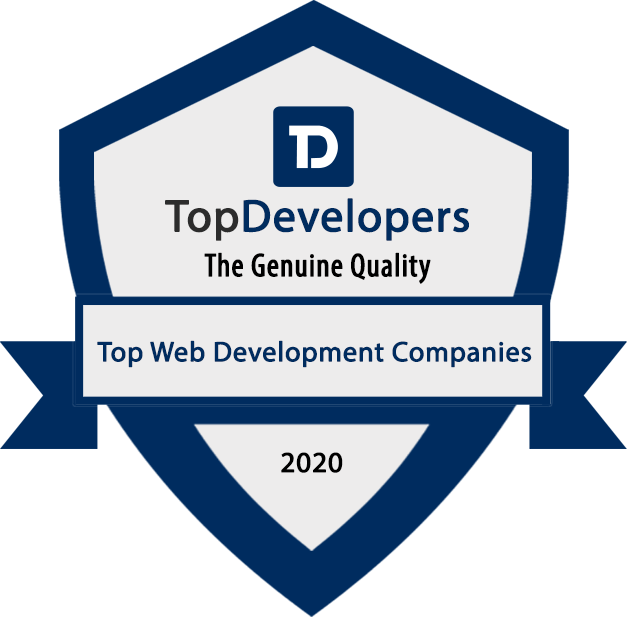Minimum Viable Product is the simplest version of the product that is built to release a product faster and with iterations. The main reason why so many businesses/startups are taking the MVP development approach to launch their product is the speed, efficiency, and feedback-supported path that it follows.
However, not each software launched as an MVP has been able to taste success. And not defining the scope early on is one of the most common reasons why so many MVP startups fail.
Without a well-defined scope of work, both the product owner and the software development outsourcing company might end up with multitudes of confusion, unsaid expectations, and misunderstandings regarding the project.
Especially when you are building an MVP, one might get confused around the deliverable features, timelines, and the expected results, and much more. Defining the scope of work can eliminate all of that.
But many companies feel that this part of the software project is challenging and time-consuming. And that’s what we seek to solve in this blog.
Here, we will not just talk about the meaning of the scope of MVP software but also help you understand its components and the steps required to define it. So, let’s get started.
What Is Scope Of Software MVP
In simple terms, defining the scope of the software development is short for analyzing the software idea, prioritizing the features/functionalities, agreeing on the deliverables as per the timelines, and the collaboration required. It also touches on the development methodology to be used and the teams & departments that will be involved in the development process.
The scope of work for a minimum viable product essentially covers all the work required to be done and delivered in order to launch the product. The entire development is divided into mini-deliverables and the requirements for each are listed in the scope itself.
5ce6.png)
When it comes to the scope of software MVP, it should include all the functionalities that need to be delivered within the timeframe specified and that too based on the different versions.
It should contain each functionality that should be included in the first version of the product and the enhancements included in the iterative steps that follow. One should also underline the reliability of different members, costs included in the development, performance metrics, and other constraints.
Also Read: How Much Does MVP Development Cost
By defining the software scope of work at the very beginning, one can estimate the resources required and other things that go into building the software MVP. A clear MVP scope can help the stakeholders identify the absolutely necessary features and functionalities of the minimum version. Moreover, one can analyze the scope to predict risks, find areas of improvement, identify opportunities for cost reduction, and much more.
Components Of Scope Of Work
While defining the software scope if imperative for any business or startup, writing a clear scope of work is also crucial, especially when you are working with a software partner or an external software outsourcing company. For those compiling the scope of their software MVP, different components go into the same. So, before we talk about the various steps one needs to take to define the scope, let’s first discuss the component of a scope of work to ease the process.
#1. Budget
One of the most important aspects to be included in the scope of the software MVP project is the budget. While many consider the budget to be mentioned only in the outsourcing contract, it is advisable to add the same in the scope.
Adding the budget in the scope means you know if you will be able to afford the project and know the extent of flexibility you can expect. The expected rates of the team members, hours that each one is expected to spend, and the add-on costs should be added to make up for the completed project cost.

Also Read: Outsourcing Costs: Ultimate Guide For Entrepreneurs
#2. Working Methodology
Not being on the same page with the outsourcing partner and their team regarding how one works can cause a lot of misunderstanding. There could be issues around unmatched expectations, fluctuating timelines, and the inability to collaborate.
For example, if you want agile software development but the outsourcing agency follows the waterfall methodology, there would be many unmet expectations, failed collaboration, and a lot of other issues in deliveries.

Getting clarity that both the companies (software development partner and the product owner) follow the same methodology can make the development process a lot smoother.
#3. Deliverables
The next component that you need to add to your scope of the project is the deliverable. These are those results, codes, certifications, etc., that you expect to receive from the outsourcing software development company. These deliverables should not just be the end result but also what would follow after each sprint.
The scope should mention the expected features, functionalities, version releases, reports, or end product that the client needs.
#4. Milestone
As most companies follow the agile methodology of software development, any software development project needs to be divided into different sprints and mini-deliverables. These could be called milestones.
These are different phases in the product development life cycle. Each phase or sprint acts as milestones that add up to the complete project. Milestones act as stepping stones to the final product delivery. The end of each milestone should be the end of a phase and an achievement, taking the project forward.
#5. Timelines
These are schedules that you need to get in writing before initiating a project. The timelines should be mentioned in the scope of work itself to ensure you know what to expect and when. This will not just set the duration of the entire project but also tell you when you can expect deliveries of the project’s features or functionalities. Moreover, make sure to have some margin and an open mind towards the timelines as they may shift due to the adjustments or changes in each sprint.

#6. Documentation
Another crucial step when it comes to setting the scope of software MVP is documentation. One needs to be clear about the requirements in the software development process and how one expects to be communicated or collaborated with. There could be several reports that you’ll need to monitor the progress and know if the project is on track. Make sure to write about the documentation you expect during the project in the scope.
Steps to Define Scope Of Software MVP
When it comes to defining the scope of a minimum viable product, there are different steps that one needs to undertake. These steps help in understanding the requirements of the software and creating a list of the key components. These include the ones we have discussed above, ie., deliverables, milestones, timelines, documentation, and outsourcing team members with their individual responsibilities.
Step #1. Analyze Your Business Objective
The first step that you should take to define the scope of your project is to analyze the main business goals or objectives that you wish to achieve from the partnership or the MVP development. You need to analyze your requirements and create a document that contains everything that you wish to achieve with the software MVP.
This should include everything from why the MVP is being developed, what will be the benefits of the MVP, what the MVP seeks to achieve, when will the software development complete, and how much would the entire thing cost.
Also Read: Why Startups Need MVP For Success
Adopting the SMART goal setting to analyze and write the business goals could be a great way to get started with defining the scope of the project.
Step #2. Identify The Target Audience For Software
The next step that one should take when defining a software MVP scope is to identify and analyze the target audience. This step will help with a lot of work related to the scope or MVP development. Here, you need to start with segmenting the audience and analyzing what experience you want to deliver or actions you want to elicit from them. You need to answer the following questions while defining the target audience:
-
Who is the ideal audience or user of the product?
-
Who can benefit from the features or functionalities that your MVP offers?
-
How does your product benefit these users?
Answering these questions can help you create a better view of the consumer base, which, in turn, will help with the next step of defining the scope.

Step #3. Define User Flow & Prioritize Features
Once you know your target audience, it is easier to put yourself into their shoes and think how they will move once they use your MVP software. You analyze the main app or software idea and create a wireframe of the intended steps that the user might take. It will help define how the product will go ahead and what features should be put in first. Make sure to keep the last action as the key business objective - conversion, submission, purchase, subscription, etc.
User flow will help prioritize each feature and define mini-deliverables or the milestones of the project. You can see what features will be absolutely necessary for the project and which ones can be avoided. Categorize them based on priority and when you need to develop which feature.
9e96.png)
Here, you should also ensure to enlist the following requirements:
-
Technology stack: In this part, you need to mention the technologies that would be required to build the product.
-
UI flow: Here, you talk about the product’s main user interface in the different versions and what features should be added in each increment.
-
Team members: How many developers, project managers, technology experts, UI/UX designers, or graphic designers would be required for the same.
-
Deployment strategy: You need to throw light on the way you plan to deploy the project further.
Step #4. Point Down The Major Deliverables
Once you have user flow and features prioritized, you can list down the major deliverables. Here, you need to list all the features you need throughout the project and your vision for the end product. Make sure that each deliverable is measurable and tangible to score the outcome from the sprint. Make sure to create the deliverables as per the features prioritized because each sprint will be planned accordingly.
Step #5. Write Down The Milestones & Timelines
The stakeholders need a particular timeline for each deliverable. And that is what you need to write down in this step. Each deliverable should be marked by milestones where one feature or version of the MVP is completed and delivered.
Moreover, these should include specific dates initially. This will give the stakeholders a tentative timeline and expectation of when they can expect the completed product.
Key Steps
-
Collect and compile all the required information regarding the project, like the deliverables, milestones, and other things. This would also include the details of the team members working on the project, rates, budget requirements, hours of work, and much more.
-
Create the user flow and prioritize each feature based on what steps you want the user to take first.
-
The next step is to determine the schedule of the project based on the deliveries and the feature prioritization. Break down the project and create a plan of when which feature needs to be delivered.
-
Analyze the timelines and get intonation regarding the collaboration. This will help in smoother collaboration to ensure that there is availability for the teams as well.
Also Read: Hiring Remote Developers For Your SaaS Development
Let’s end this write-up about defining scope by highlighting an essential aspect of the same. One should also include the list of exclusions in the scope. This means all the things that the software partner or the outsourcing vendor will not deliver to the stakeholder. These could be anything from the certifications to licenses to any extra feature that the stakeholder might expect to be added to the MVP software.
This would eliminate a large part of the confusion from the development. In addition to putting an end to unsaid expectations, enlisting the scope exclusions will also help avoid scope creep. Without such exclusions, project vendors might end up adding several additional features or work that wasn’t initially mentioned in the scope. This might extend the project delivery time and add to the overall work required to be done by the software development company that the stakeholders hire for the development work.
Defining the scope of a project is one of the key steps that one should take before initiating the software MVP development work. Not only can it help envision the project and its stages but also provide clarity regarding the development life cycle.
The success of your project depends on how well you are able to define the scope of your software MVP. It should be as specific as possible and should even explain terms that might cause confusion or misunderstanding between the two working partners. A well-defined scope can help avoid all types of disputes from software development and ensure the success of the same.


























.png)



